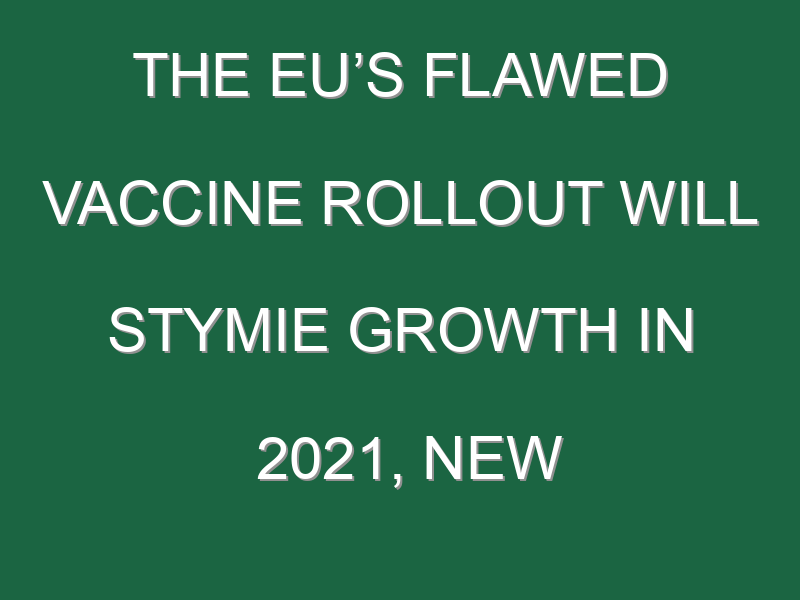The European economy will recover more slowly this year as the coronavirus keeps a tight grip on the region, with the outlook resting largely on a vaccination campaign that has so far stumbled.
The European Commission cut its forecast for euro-area growth this year to 3.8% from 4.2%, and said its predictions “crucially” hinge on virus containment measures starting to be eased toward the end of the second quarter. They should be largely phased out by the end of the year.
If those assumptions hold as more citizens are vaccinated, the economy should reach its pre-crisis level in mid-2022, earlier than previously anticipated. Still, the recovery will be uneven and Spain and Italy won’t cross that watershed by the end of next year, it said.
The euro area started the year on a weak footing as governments extended lockdown measures to combat the spread of new variants of the coronavirus. Progress has been hindered by a slow rollout of vaccinations compared with the U.K. and U.S., and the commission said it expects the EU and euro-area economies to contract this quarter.
Germany, the largest economy, said on Wednesday it’s prolonging most of its restrictions until March 7 while allowing schools and daycare centers to reopen. The EU foresees more vaccine deliveries in the second quarter and still plans to have 70% of its population immunized by the summer.
“The question is now how quickly the vaccine can be rolled out, and at what point restrictions can be loosened,” the commission said. The EU’s targets are based on expected deliveries by manufacturers and assume that the shots are administered without delay.
“As increasing numbers are vaccinated over the coming months, an easing of containment measures should allow for a strengthening rebound over the spring and summer,” said Paolo Gentiloni, EU Commissioner for the economy.
The rollout of the bloc’s 750 billion-euro ($909 billion) recovery fund could provide another boost — most of it hasn’t been factored into the latest forecasts. Countries are currently drawing up their national spending plans by identifying projects in which they intend to invest.
Much of the cash will flow to Spain and Italy, whose tourism-dependent economies have been ravaged by restrictions on international travel and the shutdown of hospitality services.
The recovery will be supported by a stronger global outlook, and could be further boosted by a “burst of post-crisis optimism, which could unleash stronger pent-up demand and investment projects,” the commission said. That would be driven by historically high household savings, low financing costs, and supportive policies.
A protracted crisis, on the other hand, could leave “deeper scars on the fabric of the European economy” through a rise in bankruptcies and higher unemployment. That would also lead to a surge in non-performing loans and potentially cause stress in the banking sector.
Inflation is expected to remain weak both this year and next, with any spikes — such as seen in January — due to temporary effects such as the end of pandemic tax breaks.
Price growth is forecast to average just 1.3% in 2022, far below the goal of the European Central Bank. The ECB has been supporting the economy through asset purchases and cheap loans to banks and has pledged to keep borrowing costs low for the duration of the crisis, while urging governments to ensure they don’t withdraw fiscal aid too soon.
More must-read stories from Fortune:
- Elon Musk’s plunge into Bitcoin is a dangerous bet that could saddle Tesla with big losses
- Can anyone fix Wells Fargo?
- Where to sign up for COVID-19 vaccinations rolling out at U.S. pharmacies this week
- Hawkeye Elegy: A collision of pandemic, disaster, and polarization in the heartland
- Will the pandemic finally get Americans to embrace QR codes?





